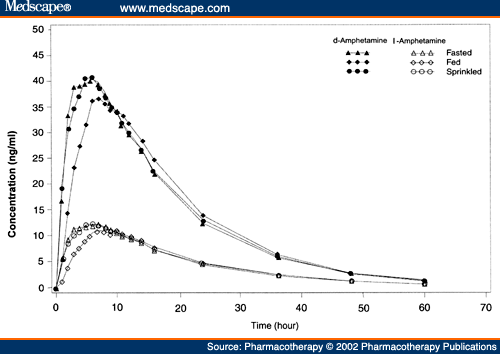

Generally, patient demonstrating only mild symptoms will not require extensive lab work or imaging and often respond to sedation and improve promptly under close observation.Adderall is the brand name for the combination of dextroamphetamine and amphetamine. A CT scan of the head will be required for altered mental status or patients with seizures to rule out any intracranial hemorrhages or stroke. A chest radiograph and electrocardiogram may be required if patients complain of chest pain or palpitations. Patients who experience altered mental status will require laboratory studies, including complete blood count (CBC), comprehensive metabolic panel, serum creatine kinase levels, and when appropriate urinalysis. Amphetamine toxicity is a clinical diagnosis and some of the key features to look for are agitation, hyperthermia, tachycardia, hypertension, and diaphoresis.

The sympathomimetic impacts of amphetamine toxicity include diaphoresis, hypertension, tachycardia, tachypnea, flushing, headache, mydriasis, nausea, vomiting, and abdominal pain in some severe cases with dryness of mucous membranes. Such effects are especially noted when METH is abused intravenously. Patients generally exhibit paranoia, hostility, combativeness, and sometimes presents with suicidal and homicidal ideations. This kind of behavior may be accompanied by gross psychosis with hallucinations and paranoid delusions. CNS stimulation may vary from slight degrees of agitation to intense hyperactivity or seizures.

Therefore, an evaluation must include an investigation into evidence of such effects. Two major pharmacological actions of amphetamines include CNS stimulation and sympathomimetic effects. Long-term use of amphetamines is associated with myonecrosis, cardiomyopathy, and myocardial infarction. Several studies conclude that amphetamine abuse is strongly associated with coronary artery disease and with subarachnoid hemorrhages. This is seen particularly in the left frontal cortex which can lead to hemorrhages and other forms of strokes. Amphetamines cause tachycardia and hypertension and can cause significant cerebral blood flow which increases by 30%. Tachycardia and other arrhythmias are due to the sympathomimetic effects of amphetamines. Catecholamine levels are also elevated in amphetamine overdose causing increased energy and increased stimulation with decreased lethargy. Amphetamine toxicity can also cause seizures due to neuronal death from the interaction between amphetamines and NMDA receptors. Increased dopamine levels in the central nervous system (CNS) cause psychosis, euphoric effects, and other movement disorders. Elevated serotonin can affect the hypothalamus and thereby, cause hyperthermia. However, they also induce the release of epinephrine, serotonin, and histamine. Amphetamines increase the activity of the neurotransmitters dopamine and norepinephrine.

Amphetamines are lipid soluble and thereby crosses the blood-brain barrier rapidly after ingesting or injecting. They cause an increase in biogenic amines that originate from the neuronal synaptic terminals, which in turn inhibit the reuptake of certain neurotransmitters. This can take a detrimental toll on an individual’s body as there are long-term effects of amphetamine abuse which include damage to nerve cells, seizures, gross psychosis, strokes, and dysrhythmias.Īmphetamines stimulate the central and peripheral nervous system. For these reasons, amphetamines can be very addicting both psychologically as well as physically due to the stimulating effects. The high from amphetamines can make users feel increased amounts of energy, confidence, and sense of clarity. There is always a high risk for amphetamine overdose due to its addiction potential. This is the consequence of both down regulations of the postsynaptic receptors and depletion of presynaptic stores of neurotransmitter. The etiology is unclear however, binging can be related to tolerance in which the user may require higher and higher doses to get the same effect. Patients who smoke or inject METH experience a strong “flash” which sometimes potentiate drug addiction with adverse health outcomes. According to the National Institute on Drug Abuse, smoking METH is the most common way of abuse. METH comes in different forms and can be smoked, inhaled, injected, or orally consumed. Amphetamine toxicity generally occurs in the setting of recreational use.


 0 kommentar(er)
0 kommentar(er)
